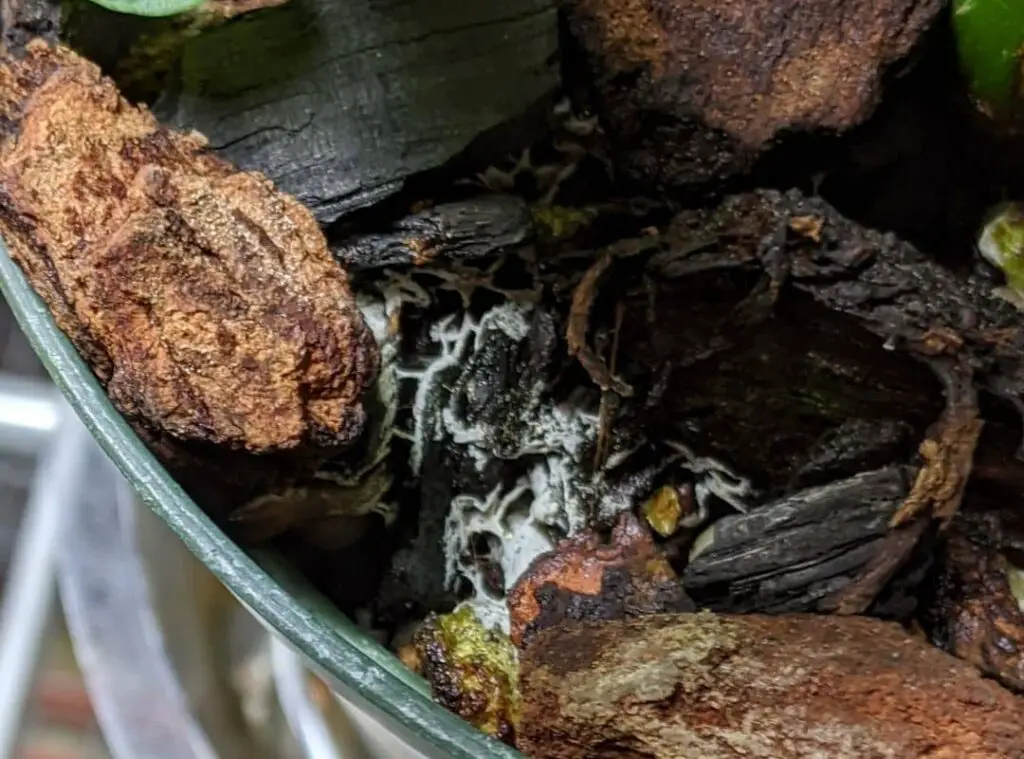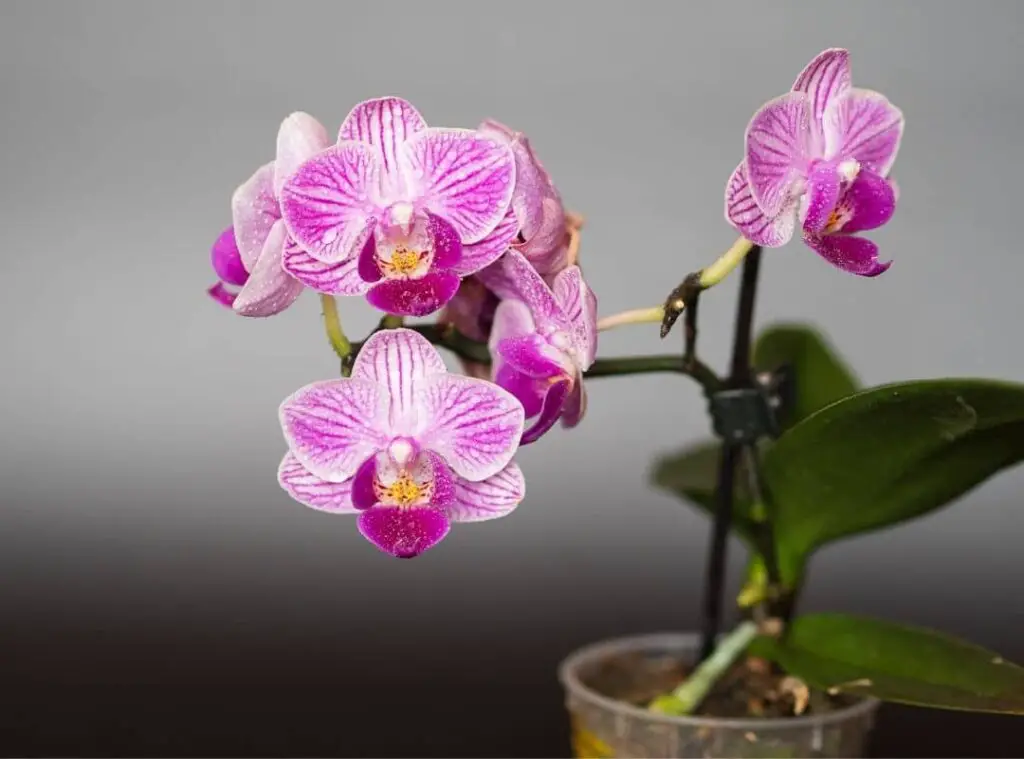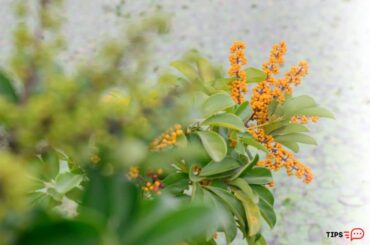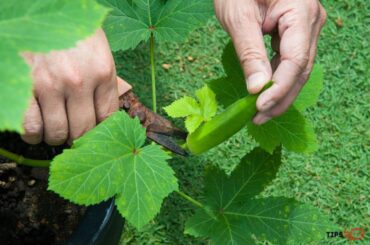Mold on Orchids are a fungal infection which you may find easily. Mold would usually develop on the spaces in the plants growing medium. Further they would be significantly visible right after you repot them. This is a commonly spotted scene particularly in terrariums setups and you may find it very mysterious there as it would come out of nowhere.

Diagnosing the orchid mold would be a somewhat challenging task. Further eliminating them from the orchids would be even more challenging. Moreover, one might find it difficult to stop them from invading the plants again.
That said, if you were wondering on the ways on how to get rid of the mold on orchids, this article will give you an insight on that. So, we are about to discover the symptoms of each mold type, the factors which could cause these and the types of treatments which you could do to remedy them etc.
Black mold on orchid leaves
Black mold is a frequently witnessed disease which would tend to look like black spots. Black mold can damage almost all parts of your plants which you could particularly spot on the leaves. Black mold would cause for black rot in the orchids. In fact, black rot is a generic name of the black mold.
It is noteworthy that black rot is a deadly condition and the best you could do is to get rid of the plants entirely so that you could avoid a further spread of it among the rest of other healthy plants. As such. At the very moment you spot your orchids go through this condition, you need to isolate the affected plants.
Symptoms of Black mold
Once they suffer with this condition you could spot the leaves become yellow in color. Further once they spread further, they would come up with large black spots on the leaves. As the black mold spread more, the discoloration would spread to the stem and to the roots of the plants as well. If the seedlings contact black mold, it will turn out to be lethal on the plants.
Causes of Black mold
There are several causes which could pave the way for this condition. For instance, contamination from other plants, usage of unsterilized pots and growing mediums, contamination from poor watering techniques and bad air circulation are some of them.
Treatments for Black mold
If you decide to keep growing the plants even though they exhibit the symptoms of black mold, you need to snip off the infected areas first. One might find this method as harsh. However, if you want to have the least probability of the survival of the orchids, this is an essential step which you need to follow.
Furthermore, it would help you to protect the healthy plant parts too. However, before you proceed with making the cuttings, you need to assure that all the tools you are using are sterile. Further it is important that you sanitize the working area also. Once you treat the plants, discard all the leftovers of the plants. Ideally you need to place infected plant parts in a plastic bag and then get rid of them entirely.
Do not place them closer to the healthy plants. Further you may treat the black mold infected plants with ground cinnamon. Ground cinnamon is a natural fungicide and you can simply sprinkle them on the cut areas of the orchids. That will help to avoid a further spread on the plants.
Repotting the plants using a new growing medium is also a fine way of controlling the black mold. Once you change the older soil mix into a new soil mix it would provide new growing conditions for the plants.
However, when you repot, ensure that you are using a fresh sterile pot. Isolating the affected plant is a must which you should do too. Finally, I suggest using natural fungicides on the plants so that it would allow the plants to recover.
Snow mold on orchid
Snow mold is yet another commonly occurring condition in the orchids. All the orchid lovers hate to deal with these nasty disease. The root cause for the snow mold is a fungus which attacks the potting media first and which would eventually end up attacking the roots of the plants.
When they attack the roots of the plants, it would obstruct the water absorption process of the plants. In fact, snow mold is a water repellent fungus.
Further chances are that you may sometimes get confused when identifying the snow mold assuming that it is a mealybugs attack as mealybugs would also tend to look like white growths on the plants.
To elaborate further on this, mealybugs secrete a white waxy substance and that gives a look of a fungus of white. However, snow mold tends to develop in the potting mediums while mealybugs tend to feast on the entire plant.
Causes of mold orchid
If the potting mix is not sterile, it is something which could contribute to this condition. Snow mold prefers to occupy the decaying potting medium. Further if you spot snow mold in your plants it indicates that you have over watered the plants as well. Overall, if you use a soil mix which is not sterile, it causes this condition.
Symptoms of mold orchid
The very first indication of Snow mold is a white powdery growth in your potting media. The fungus which causes this condition is Ptychogaster sp. Once the snow mold infestation further spreads, it would infuse through the potting soil and end up growing out of the holes in the base of the pots.
Snow mold would usually not depend on the plants. Usually, they would prefer to thrive on the dead decaying materials in the pots. Once your orchids go through this condition, it would badly affect the vigorous growth of the plants. Ultimately it would even result in a fatal outcome of the plants. Further once this progressed on a massive scale, it would cover the base of the plants for several inches.
Treatments for mold orchid
Repotting the affected plants would be a fine way of treating the orchids which are experiencing a snow mold condition. As aforesaid over watering would be a root cause which would result in this condition. As such you need to cut back on watering at the very moment you identify your orchids are going through the snow mold.
Next you can dip the infected roots, rhizomes and pseudobulbs in fungicides to overcome this problem. However, I recommend using a fungicide which contains ingredients such as alkyl dimethyl benzyl ammonium chloride as it would be more effective in overcoming them. I suggest you do this twice for a couple of weeks which will help you to get rid of the snow mold.

Blue mold on orchid roots
Blue mold is another concerning condition which your orchids may find it difficult to cope up with.
Causes of Blue mold
Excessive humidity levels are what could cause this condition. If you supply too much water, it will make the orchids more attractive for the blue fungus to attack the plants. Further over watering would further enhance the presence of the spores in the bark and it would eventually result in this condition.
Treatments for Blue mold
It is important that you change the older substrate into a fresh one when treating them. Consequently, it would provide new growing environments for the plants. In addition to that you need to water the plants moderately so that you will not have to go through these conditions again.
Sooty mold on orchids
If you spot your orchids covered with black spots, it will literally mean the orchids are suffering from sooty mold. It would be somewhat complicated to figure out from where the sooty mold arises. Sooty mold is a mold type which usually occupies the secretions produced by scales, aphids, and mealybugs.
Once these pests invade the plants, they would end up covering the surface of the leaves with the secretions. This is where the sooty mold tries to enter the plants and where they resume their multiplication process.
Symptoms of Sooty mold
As the name itself suggests, the symptoms of Sooty mold would be such where your infected plants would be carrying a grimy black soot on plant twigs as well as on the leaves. When your orchids suffer from this condition, one might think that someone has placed the plants closer to a fire or dumped ashes on them. Furthermore, once these plants suffer from this pest attack, they would be more susceptible for the pests’ attacks.
Causes of Sooty mold
Pests which excrete honeydew are what could result in the occurrence of sooty mold.
Treatments for Sooty mold
Treating the source of the sooty mold is crucial when overcoming the sooty mold. Sooty mold would prefer to thrive in the honeydew which is produced by the pests such as aphids, mealy bugs, and the scales. Hence you need to identify what pests have invaded your plants and then react fast to overcome them.
When you eradicate the pest problem, you may easily get rid of the sooty mold by rinsing the leaves, stems and the branches of the plants. In addition to that you may also use Neem oil which will be an effective way of eradicating the pest’s problem as well as the fungal attacks.
However sooty mold is not serious, and it is very rare that they would result in a lethal impact on the plants. However, the root cause for the sooty mold could turn out to be fatal on the plants.
Gray Mold on orchid
Gray mold is commonly known as Botrytis. Chances are that it could bring adverse effects on the plants if you do not attend to them well in advance.
Causes for Gray mold
If your orchids are having poor aerations and damp conditions, those factors would be favorable for gray mold to take place in the orchids. Further the spores tend to attack the plants right after they overwinter in decayed plant materials.
They could be so annoying since as soon as they are landing in the plants, they can start attacking them in a short period such as in less than one day. The circulation of the spores could happen via winter wind. Furthermore, the usage of infected garden tools may also lead to this condition.
The high humidity levels, wet leaves and colder temperatures would be favorable conditions for the gray mold and those conditions would suit them the best.
Symptoms of Gray mold
You could identify the gray mold of the plants by their small brown spots which would usually develop on the petals and on the sepals of the blooms. Further you may also spot discolored areas on gray and tan colors in the leaves also. Once the infection progresses, those spots would further grow in the same direction towards each other.
Ultimately it would give a look of a gray mass growth for the plants. Furthermore, botanically speaking it would result in tissue collapse also.
Treatments for Gray mold
Keep in mind that you need to keep the humidity level low as much as you can. Further, always keep the wetness on the surfaces of the leaves at a low level. Lastly, ensure that the orchids have a proper air circulation as well. These conditions would create a less potential for any occurrence of gray mold.
The best time to water orchids should be in the morning and always try to adhere to that whenever you water the plants. That way it will give sufficient time for the water to evaporate rapidly. Furthermore, when you plant several orchids, you need to plant them in such a way where the plants can get a proper air circulation.
Not only that but also, I recommend using fungicides on the infected plants. Furthermore, you may also snip off the infected plant parts and try to provide the right growing conditions where the plants will be more on the drier side. If you follow these guidelines, overcoming gray mold won’t be an issue.
How do you get rid of mold on orchids?
Natural ways of getting rid of the mold on orchids
First of all, you need to arrange 3 % Hydrogen peroxide, 70 % Isopropyl alcohol, 8 ounces spray bottle and a fresh orchid medium. To get rid of the mold, you can follow the below steps. Start the proceedings by unpotting the orchids. To do that you can simply squeeze the inner pot and loosen the roots from the sides of the pot.
After that take the plant out from the pot gently. Next observe the plants as well as the roots of them. Secondly you need to take the potting medium out. I recommend emptying the pot since the soil mix is contaminated. Next you can discard the potting medium as you cannot make use of them anymore.
In the meantime, you need to disinfect the work area. To do that you may use 70 % isopropyl alcohol. Furthermore, don’t forget to sterilize the pots thoroughly before you use them. Next it would be better if you could disinfect your orchids as well. To disinfect the orchids, you can fill an 8-ounce spray bottle with Hydrogen peroxide and then spray on the orchids.
Having said that, refrain from spraying the healthy roots with that as if you accidently do so, chances are that it would damage the velamen. Let the plants disinfect for about five minutes. Keep doing this treatment for effective results.
Finally, you can consider transplanting the plants while using a new potting medium. Bear in mind that you need to keep the leaves on the dry side so that you do not have to go through these troublesome times once again.
Chemical ways of getting rid of the mold on orchids
There are several broad-spectrum fungicides which you can make use of for this purpose. They are usually non toxic for humans. Having said that if the fungicides remain to be in groundwater or in soil for prolonged periods chances are that it could be catastrophic for birds’ honeybees and for earthworms.

How to prevent mold on orchid?
As explained in the article, it is always best to prevent the mold occurring in your orchids rather than treating them once they are present. Following are some of the preventive measures which you could practice.
Keep the plants under your observation on a constant basis.
Ideally you can plant the orchids in clear plastic pots where you can have a closer and a clear look on the roots. Further, that would allow you to have a thorough look on the potting medium as well. Not only that but also, you need to observe the underneath of the leaves and the stems of the plants as well. Do it on a constant basis without doing it occasionally.
Provide a good aeration for the plants.
Ensure that you place them in a spot where there is proper ventilation. You may be tactful to open all the windows in the surrounding of the plants which will enhance the ventilation around the plants. If there is improper air circulation around the plants, water evaporation of the orchids would not take place at a rapid pace. Consequently, it would pave the way for the mold spore to develop and to transmit among the plants.
Keep replacing the older potting medium periodically.
If the potting medium available for the orchids is decaying, I suggest replacing them once you could spot them breaking down and decomposing. If you can sense a foul smell, that literally means you need to immediately change the soil mix.
Get rid of the dead decaying roots.
You may consider doing this step when you transplant the orchids. Decaying roots are the preferred areas where the mold tends to occupy.
Proper watering schedule
Adhere to a proper watering routine when looking after the orchids. Do not ever supply water in excess for these plants. As you may already know, moist environments are optimal conditions for both mold and fungus. Hence try to keep the plants on the dry side always so that there will be less chance for any potential outbreak of these nasty little creatures.
What Type of Potting Medium Should You Use for Your Orchids?
Potting mediums which are specially designed for orchids would suit well with the orchids. In addition to that you may also go ahead with a bark mixed potting medium too. That would ensure that your plants are getting proper air circulation around the roots. You may also go ahead with coconut husk growing medium which would help to soak up the excess water.
In addition to that you could also proceed with a perlite mixed potting medium which is renowned for creating a good aeration for the plants and for their ability to retain water for the roots. On the other hand, you could also grow the orchids in a charcoal mixed potting medium which would remove impurities from within the medium.
Apart from that you could also go ahead with a sphagnum moss mix which would help to retain some moisture within. Apart from that, you could also go ahead with cinder and tree fern mixed potting mediums which would provide a good aeration.
Furthermore, tree fern also has a possibility to retain moisture. However, irrespective of the potting medium you use, you need to ensure that you are using a potting medium which can absorb water and evaporate water at a rapid rate.
What is the best potting mix for orchids?
I suppose the best potting mix to grow the orchids is Dirtcos long fiber sphagnum blend as it has a significant component of charcoal and perlite. Furthermore, perfect plants all-natural orchid potting mix would also work well with the orchids. It also comprises pine bark, coconut chips, sponge rock and charcoal and orchid bark.
If you are someone who lives in humid conditions, you could go ahead with this option. What is more special about it is that it does not contain any chemical additives as well. Further if your orchid is thin rooted, it would be a fine idea to go ahead with. Apart from that you may also choose perfect plants, an all-natural orchid potting medium which has greater components of pine bark, coconut chips, sponge rocks and charcoal as well.
Why is potting medium important?
Proving a right growing medium is very crucial as they would provide the right growing conditions for the orchids to grow vigorously. The regular soil mix will not contain compost decomposing material like the specifically made orchid potting mixes do. Hence why you need to refrain from using those. Further it is important the selected soil mix has a good air circulation so that the roots can breath well.
Final thoughts
You may come across over thousands of orchid species and you can find them in almost all the countries apart from Antarctica. So, when you cultivate them, it is imperative that you provide the best conditions for them so that they can thrive well.
On that note, I hope you found this article very informative and now that you’re ready to start growing these amazing beautiful plants. Trust now you are well aware of how to identify which mold type your orchids are suffering from and the modes of overcoming them.
Read Next : How To Use Fungicides On Plants Carefully?




